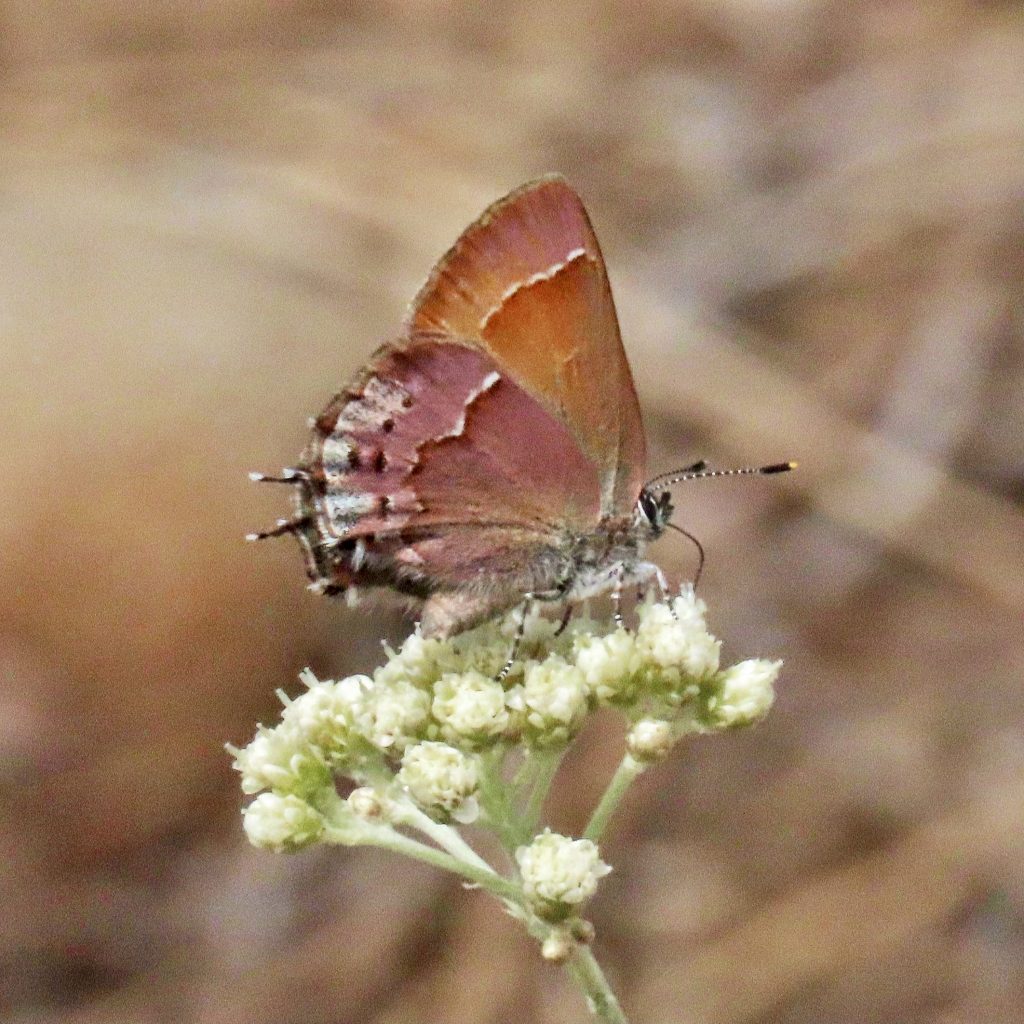
The taxonomy of species presently considered to be in the genus Callophrys is in flux. In fact it’s kind of a mess. The most common taxonomy I have found uses 4 subgenera to organize Callophrys, and assigns this species to the subgenus Mitoura. But Guppy & Shepherd (Butterflies of British Columbia; 2001), and my friend Norbert Kondla (who generously confirmed my id and helped me understand some of this, although all errors are unquestionably due to my lack of understanding rather than Norbert’s), think that Mitoura deserves full genus status, and the molecular biology of Pratt/Ballmer/Wright (2011) appears to me to bear them out.
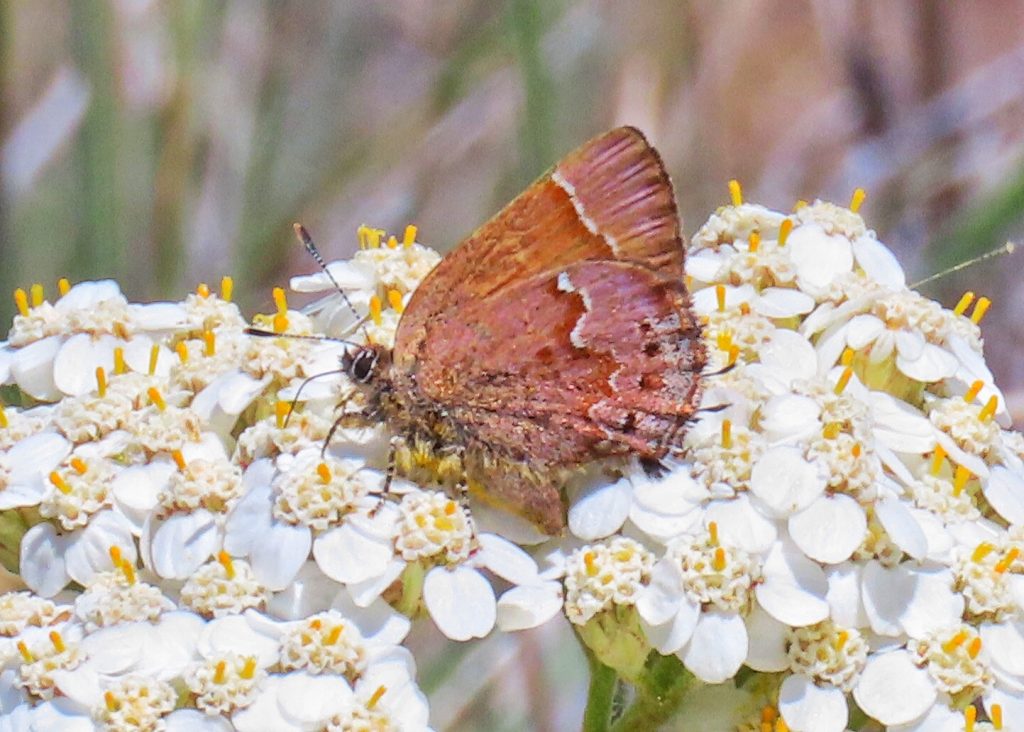
Despite all of that, I have, for now, chosen to follow the treatment in “Butterflies of the Pacific Northwest” (Pyle/LaBar; 2018) and call them Callophrys, because that is the most common reference material for butterfly enthusiasts in our region, and that usage will therefore create the least confusion. But I am fairly certain we will end up calling them Mitoura.
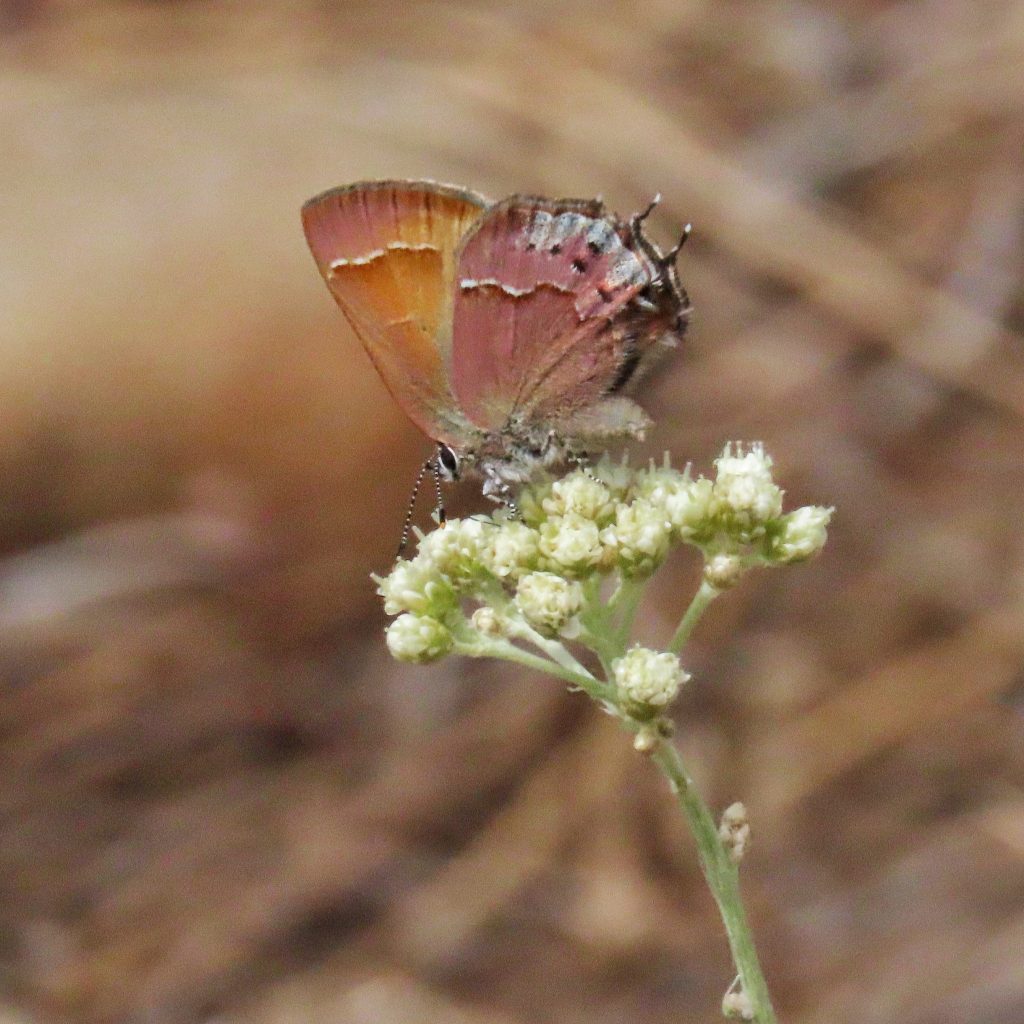
The specific epithet is even more confusing, and that there is no general agreement is in large part because not only don’t populations of members of the gryneus complex necessarily constrain themselves to using only cedars (Thuja or Calocedrus) or only junipers (Juniperus) as larval hosts, but where populations overlap they have the inconvenient habit of intergrading and hybridizing. There are at least 8 possible species/subspecies within this complex, and really no consensus as to their placement.
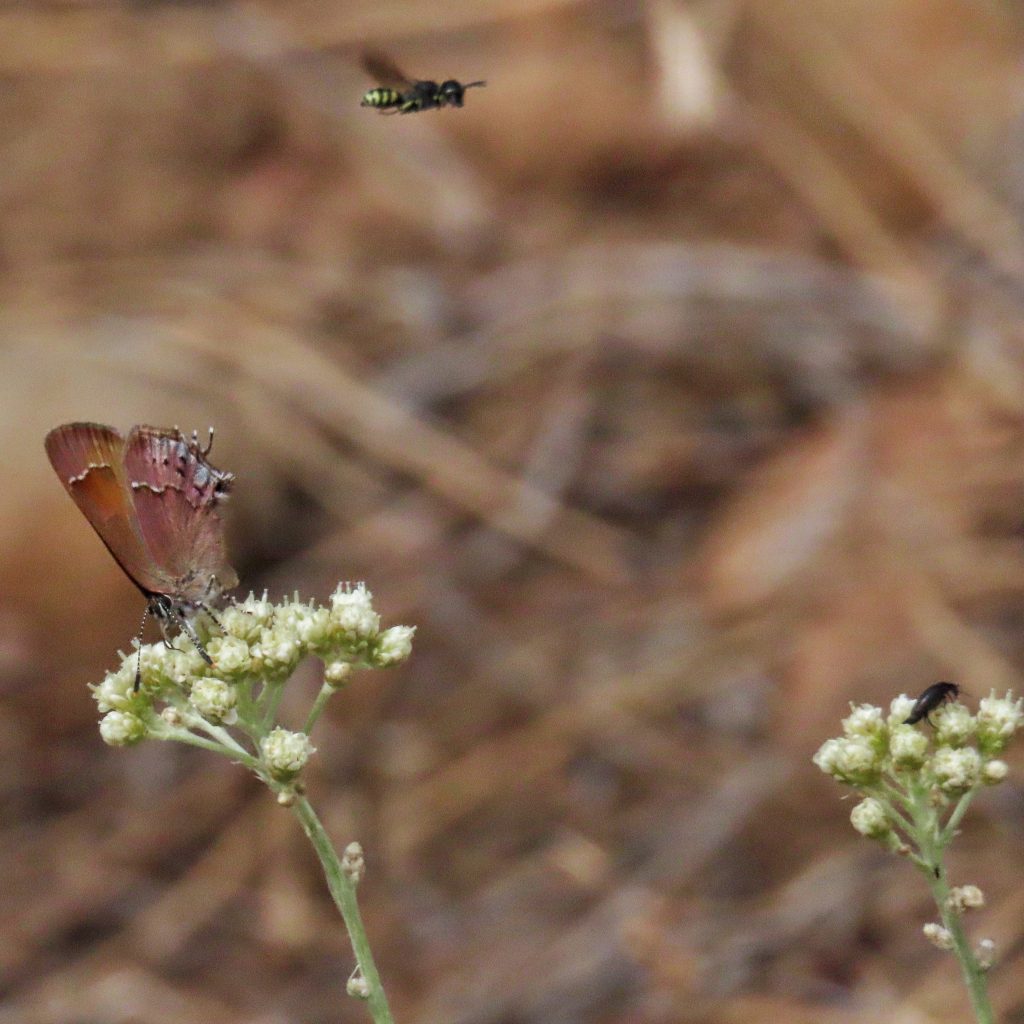
So, once again for simplicity’s sake, and despite the fact that my guess is that this particular butterfly will end up being called Mitoura siva, I am again following Pyle/LaBar (and Pelham and NABA, etc) and calling this Callophrys gryneus. But, because the butterflies pictured here undoubtedly used junipers as a larval host, I am going to stubbornly call them Juniper, rather than cedar, Hairstreaks.
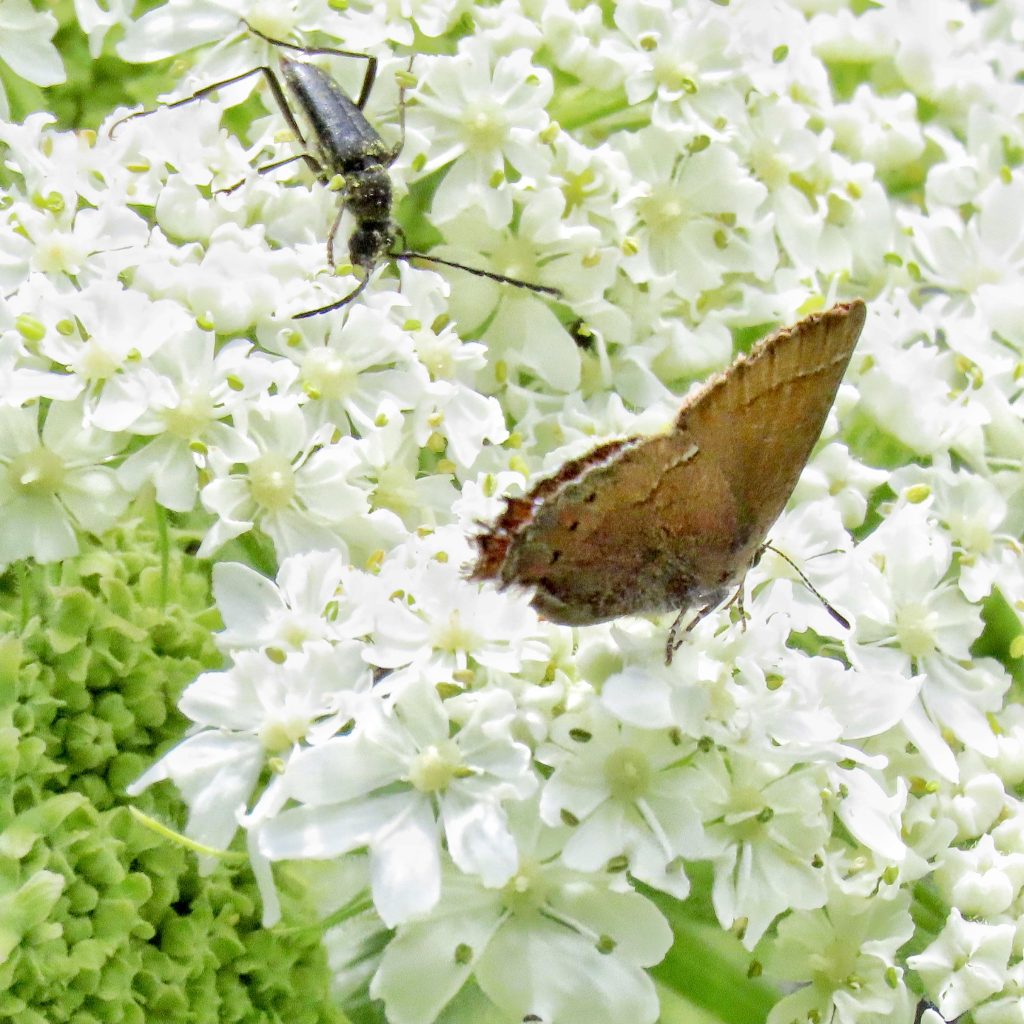
Lycaenids in general seem to perch most often with their wings closed, but Callophrys gryneus takes that trait to another level. Based on photos of pinned specimens the dorsal surface may be more or less uniform brown, but I’ve never seen one with its wings spread, and I can’t even find a live photo showing the dorsal surface.
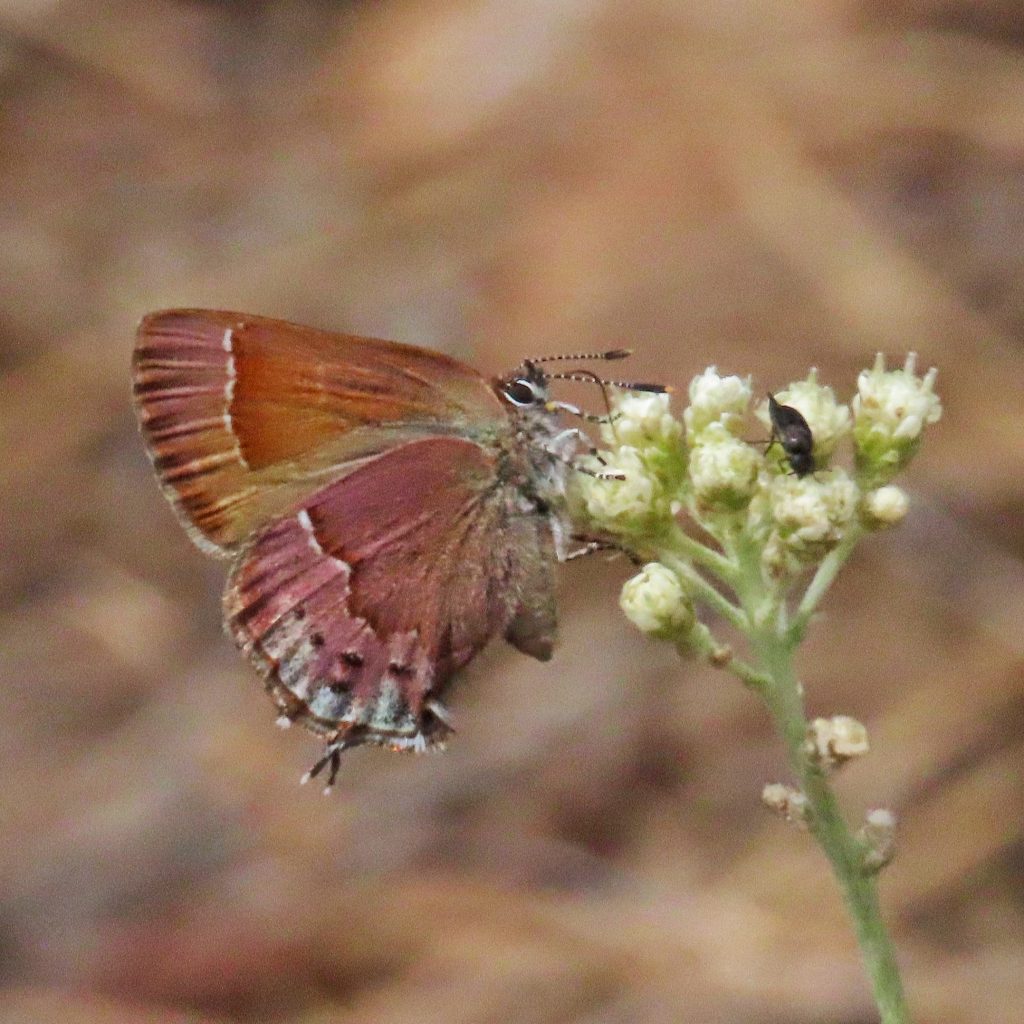
Regardless of what label we humans end up arrogantly assigning to them (it would be interesting to know what the indigenous peoples called them, and whether they, with their unique observational opportunities and skills, differentiated between populations utilizing different larval hosts), it is always a special treat for me to see these beautiful butterflies alight on a flower and begin to nectar. Apparently they will occasionally come to puddles and mud in great numbers, but I’ve never been fortunate enough to see that, though I am keeping my eyes peeled.
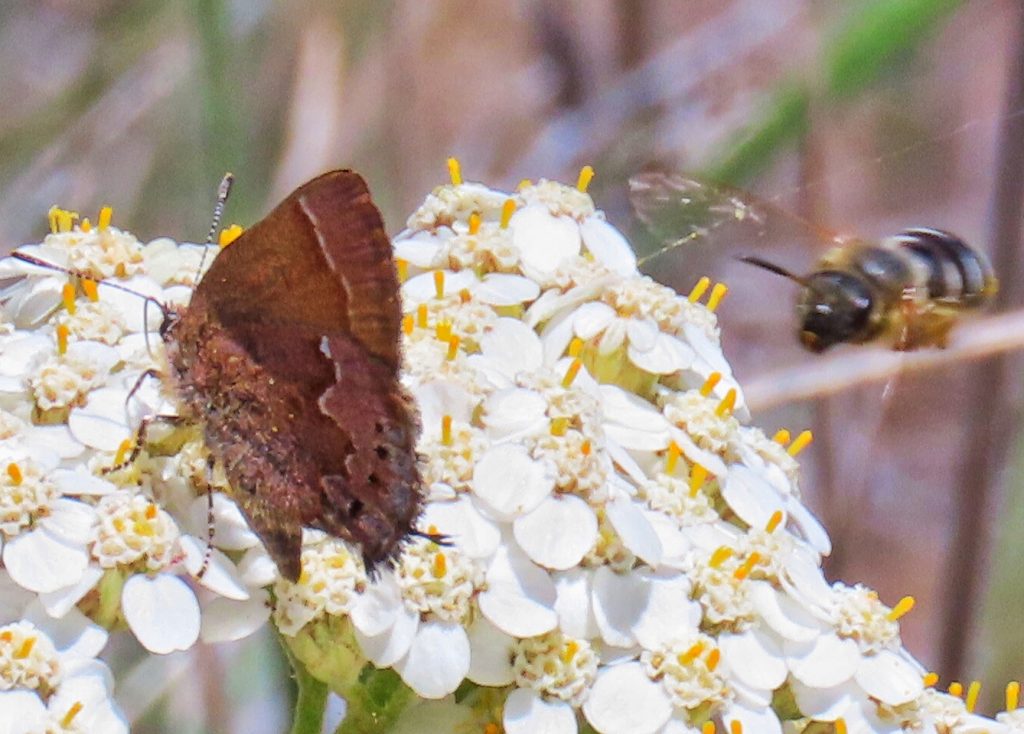
Description– Small (fw length 15-17mm), grizzled brown and grey butterfly with an incomplete black and white postmedial line, a subterminal group of black spots on the ventral hindwing, and thin, white tipped tails on the hindwing; tends to be grey toward the apex and distal to the postmedial line on the ventral wing surfaces.
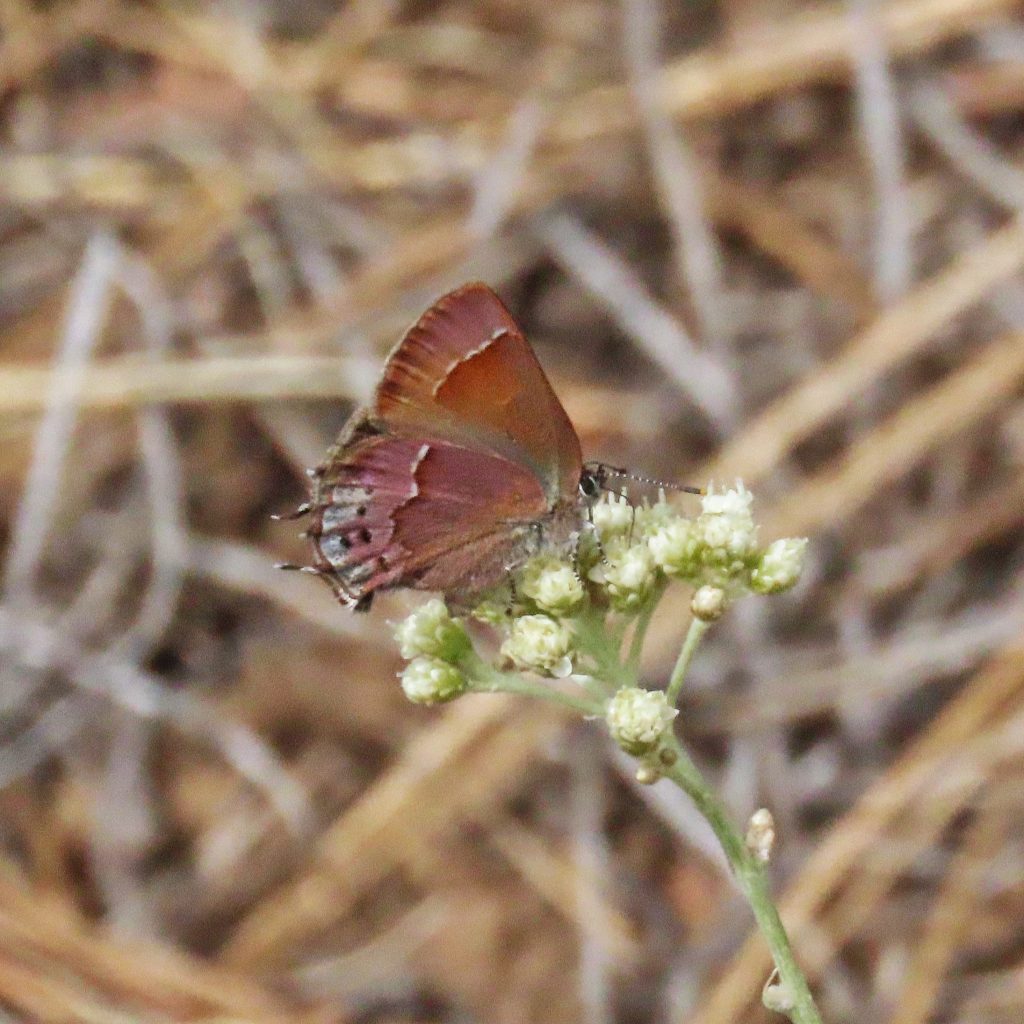
Similar species-Members of the ‘cedar hairstreaks’ tend to be more chocolate brown or burgundy on the underwing, but until there is clarification as to taxonomy nothing definitive can be said; C. spinetorum (Thicket Hairstreak) and the increasingly rare C. johnsoni (Johnson’s Hairstreak) are more uniformly brown and have a complete, bolder white postmedial line.
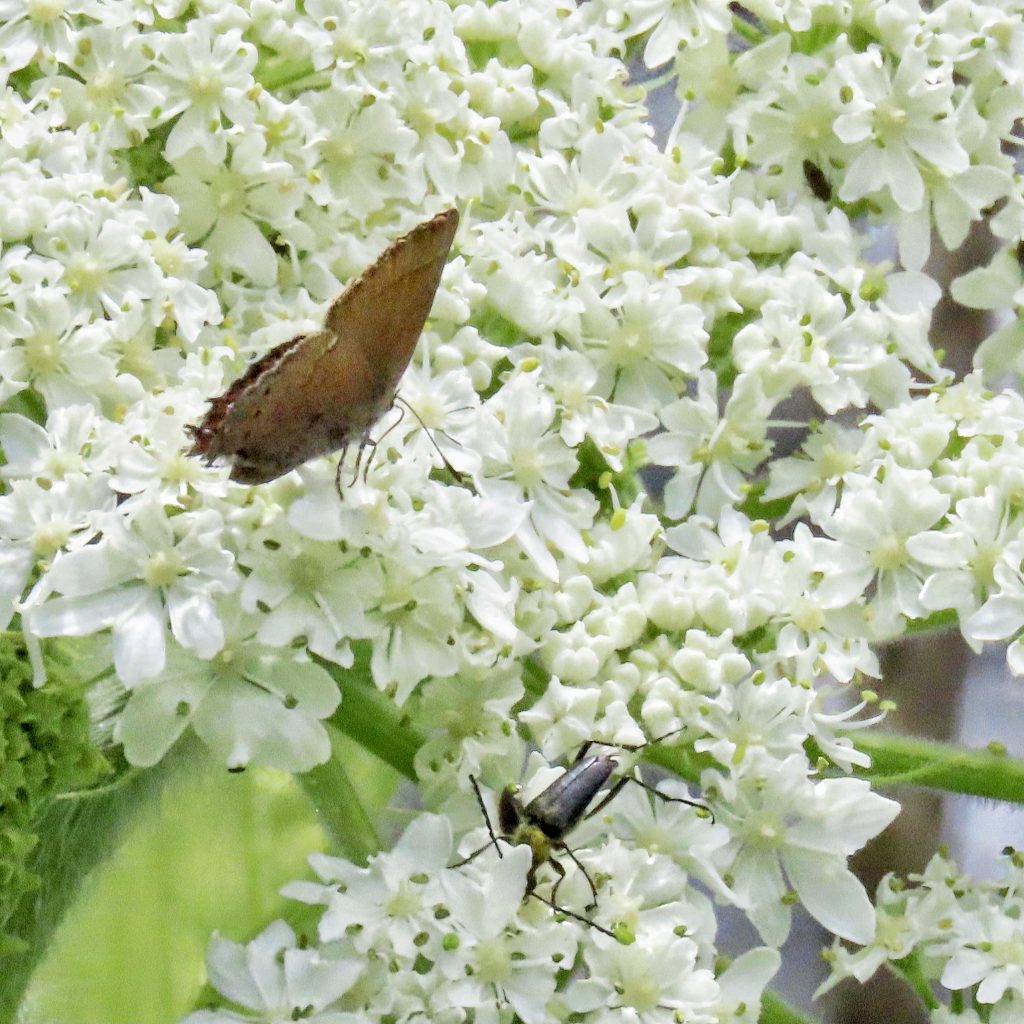
Habitat– Mesic to arid juniper woodlands.
Range-Members of the gryneus complex are found across North America; the ‘juniper hairstreaks’ are found east of the Cascades.
Eats-The larvae of this population are probably very specific to Juniperis occidentalis (Western Juniper); adults nectar at a wide variety of flowers.
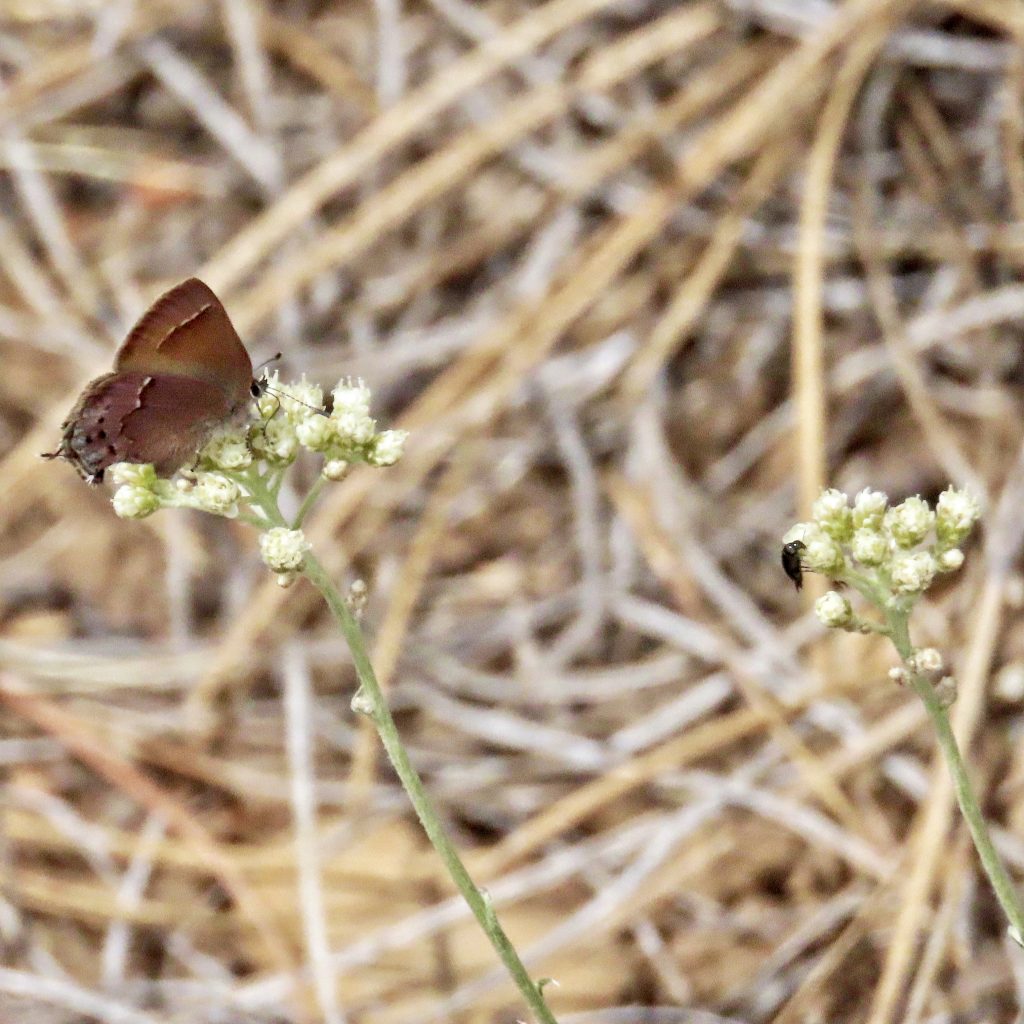
Reproduction– Univoltine in our region; eggs are laid on foliage tips and flowering twigs, and hatch soon after; they feed on new growth in the foliage; larvae pupate by mid to late summer, and overwinter in diapause; it is interesting to note that females show a preference for ovipositing on older trees, but laboratory studies have shown that the larvae grow much faster and larger on foliage from younger trees; as yet this paradox is unexplained.
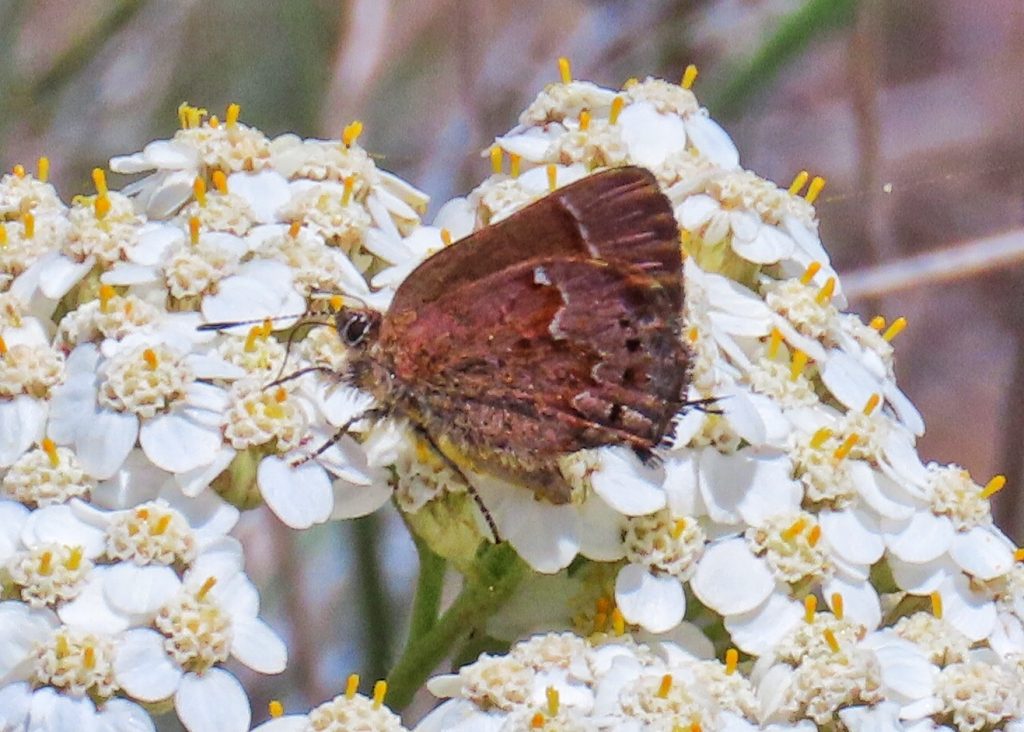
Adults active-April through July, depending on latitude and elevation.
Etymology of names–Callophrys seems to be from the Greek words for ‘beautiful eyebrows’, and to refer to the green scales on the eyes. The subgenus name Mitoura means ‘thread tail’, which refers to the thin tails on the hindwing. The apt and descriptive nature of this term is one of the reasons I would favor it as a genus name. The specific epithet gryneus is from the Greek for ‘of the wood’, and probably refers to these butterflies association with forests and woodlands. The alternate specific epithet siva is named for an area in Turkey.
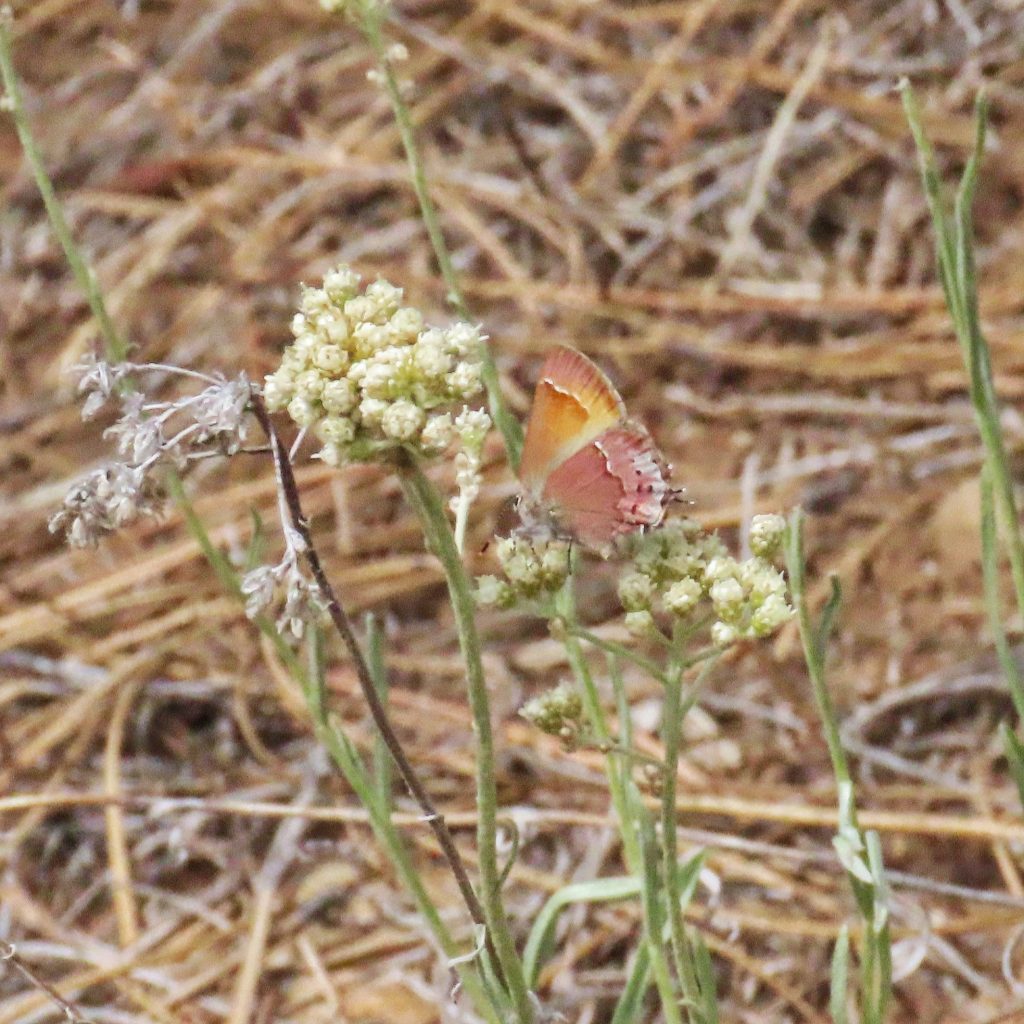
https://bioone.org/journalArticle/Download?fullDOI=10.18473%2Flepi.v65i4.a1
Juniper Hairstreak Callophrys gryneus (Hübner, [1819]) | Butterflies and Moths of North America
Species Callophrys gryneus – Juniper Hairstreak – Hodges#4318 – BugGuide.Net
https://www.workman.com/products/butterflies-of-the-pacific-northwest
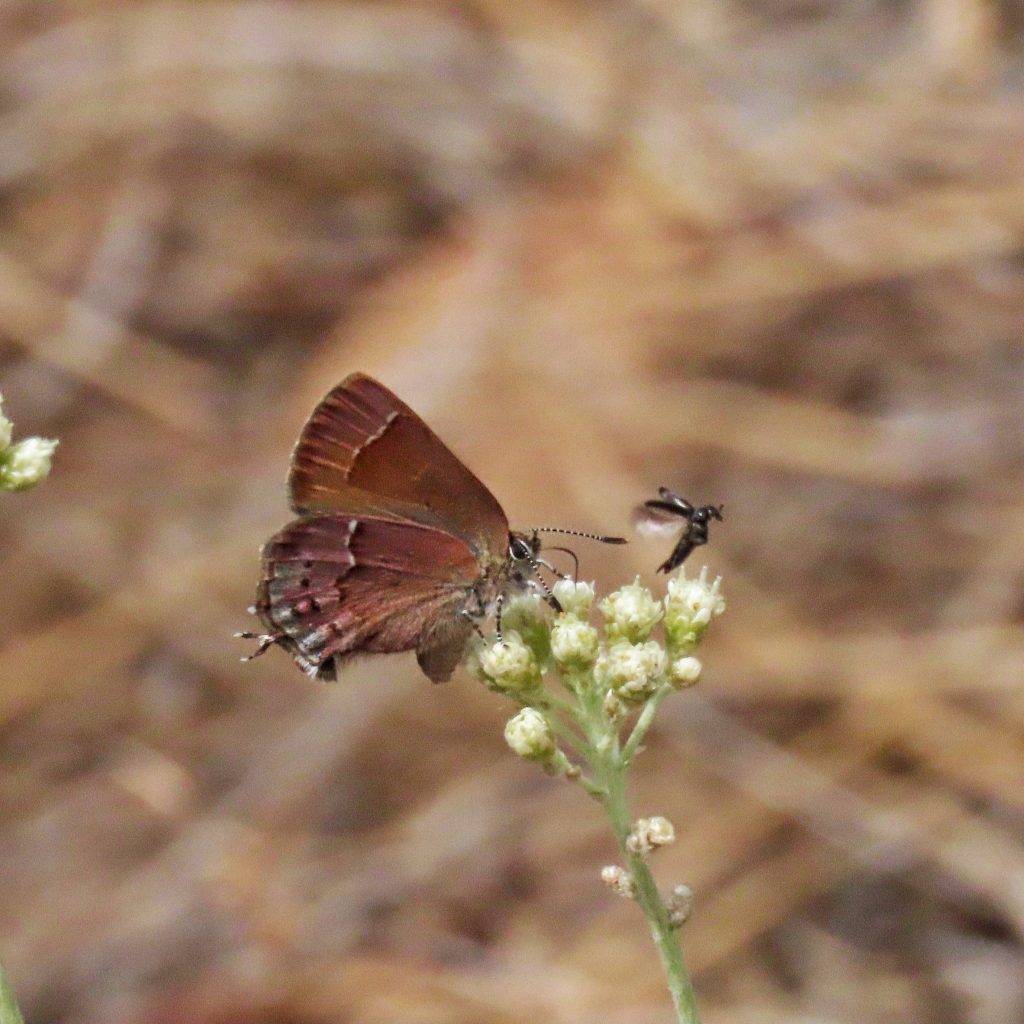
Just a comment, I like the added bee pics. The preference to old juniper could be they are hard wired to the more rounded shape of the ancient one compared to pyramid shape of todays junipers.
I always love it when some other bug ‘photobombs’ the pic! I wish I’d noticed the beetle at the time so I could’ve possibly got diagnostic photos. And you may well be correct about them being hardwired for a particular shape.
Exquisite photos of the beautiful Juniper Hairstreak! Thank you ☺️